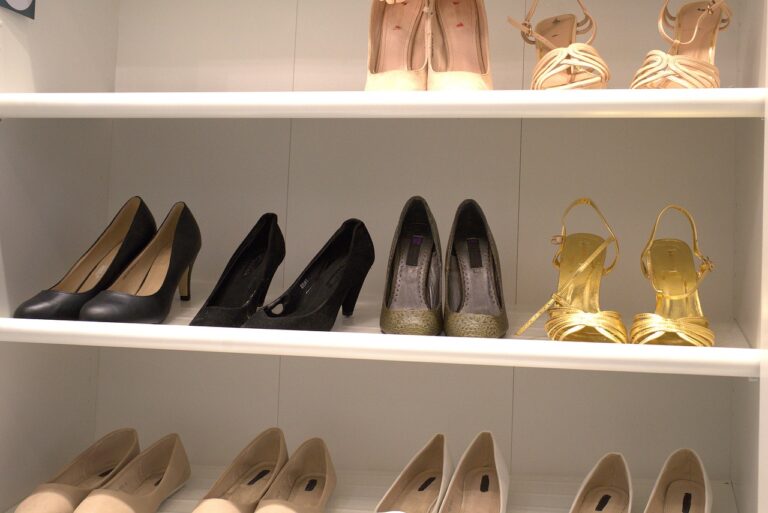Fashion Show Industry Alliances: Collaborating for Collective Growth: Allpaanel mahadev book, Laserbook247, Bat book 247
allpaanel mahadev book, laserbook247, bat book 247: The fashion show industry is a complex and competitive space, with designers, brands, and organizers constantly vying for the spotlight. In this fast-paced environment, collaboration is key to success. By forming alliances and working together towards collective growth, players in the fashion show industry can maximize their impact, reach new audiences, and drive innovation. In this blog post, we will explore the benefits of fashion show industry alliances and discuss how collaboration can lead to mutual success.
Driving Innovation Through Collaboration
In the world of fashion, innovation is essential. Trends come and go, and designers must constantly push the boundaries to stay ahead of the curve. By forming alliances with other industry players, designers can pool their resources, share ideas, and spark creativity. For example, by collaborating with a technology partner, a designer can incorporate cutting-edge materials and techniques into their collections. Similarly, by teaming up with a marketing agency, designers can reach new audiences and expand their brand’s visibility. Through collaboration, designers can tap into new ideas and inspirations, pushing their work to new heights.
Expanding Reach and Visibility
In today’s digital age, reaching a broader audience is more critical than ever. By joining forces with other fashion industry players, designers can expand their reach and increase their visibility. For example, by partnering with a popular influencer, a designer can showcase their collection to a vast online audience. Similarly, by collaborating with a retail partner, designers can access new distribution channels and reach customers in new markets. By forming alliances with other industry players, designers can leverage their partners’ networks and platforms to amplify their message and connect with a broader audience.
Maximizing Impact and Influence
Fashion shows are a powerful platform for designers to showcase their work and make a statement. By forming alliances with other industry players, designers can maximize their impact and influence. For example, by teaming up with a sustainability advocate, a designer can promote ethical fashion practices and raise awareness about important issues. Similarly, by collaborating with a charity organization, designers can use their platform to support a worthy cause and make a positive impact on society. By joining forces with other industry players, designers can amplify their message and reach a wider audience, driving positive change and making a difference in the world.
Fostering Community and Connection
The fashion show industry can be a competitive and cutthroat space, but it is also a vibrant and creative community. By forming alliances with other industry players, designers can foster relationships, build connections, and strengthen the fabric of the fashion community. For example, by collaborating on a collective show or event, designers can come together to celebrate their work, share ideas, and support each other. Similarly, by partnering with a mentor or advisor, designers can gain valuable insights and guidance to navigate the complexities of the industry. Through collaboration, designers can build a supportive community that empowers them to succeed and thrive.
Embracing Diversity and Inclusion
Diversity and inclusion are crucial in the fashion industry, and by forming alliances with other industry players, designers can embrace these values and promote equality. By partnering with a diverse group of collaborators, designers can bring new perspectives, voices, and experiences to the table. For example, by working with a designer from a different cultural background, designers can create collections that celebrate diversity and represent a wide range of identities. Similarly, by collaborating with models of all shapes, sizes, and backgrounds, designers can showcase the beauty and diversity of the human form. By embracing diversity and inclusion in their alliances, designers can create a more inclusive and representative fashion industry that celebrates all voices and perspectives.
The Power of Collaboration in the Fashion Show Industry
In conclusion, collaboration is essential for success in the fashion show industry. By forming alliances with other industry players, designers can drive innovation, expand their reach and visibility, maximize their impact and influence, foster community and connection, and embrace diversity and inclusion. Through collaboration, designers can tap into new ideas, reach new audiences, and create meaningful change in the world. By working together towards collective growth, players in the fashion show industry can unlock new opportunities, inspire creativity, and shape the future of fashion. So let’s embrace collaboration, celebrate diversity, and build a more connected and inclusive fashion community together.
FAQs
Q: How can designers find potential collaborators in the fashion show industry?
A: Designers can find potential collaborators by attending industry events, networking with other industry players, and reaching out to brands and organizations that share their values and goals.
Q: What are some examples of successful fashion show industry alliances?
A: Some examples of successful fashion show industry alliances include collaborations between designers and retailers, designers and technology partners, designers and influencers, and designers and sustainability advocates.
Q: How can designers leverage social media to promote their collaborations?
A: Designers can leverage social media by sharing behind-the-scenes content, showcasing their collaborative work, and engaging with their audience to create buzz and excitement around their partnerships.
Q: What are some best practices for designers looking to form alliances in the fashion show industry?
A: Some best practices for designers looking to form alliances in the fashion show industry include defining clear goals and objectives, establishing open and transparent communication, and working together towards mutual success and growth.







